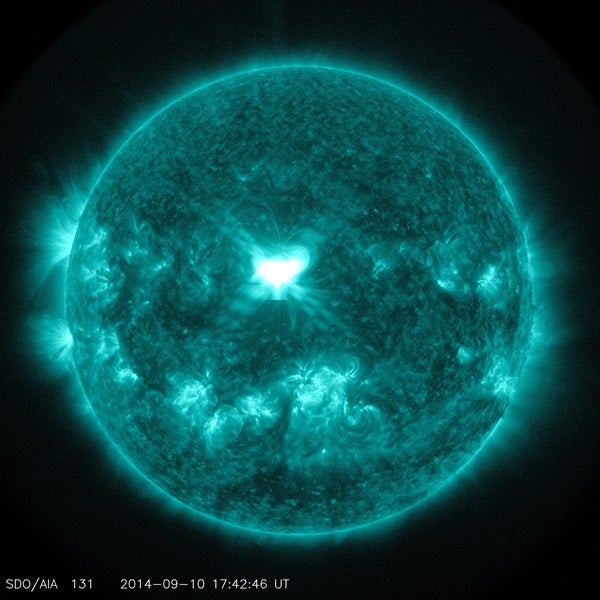The Sun emitted a significant solar flare, peaking at 1:48 p.m. EDT on September 10, 2014. NASA’s Solar Dynamics Observatory captured images of the event. Solar flares are powerful bursts of radiation. Harmful radiation from a flare cannot pass through Earth’s atmosphere to physically affect humans on the ground. However — when intense enough — they can disturb the atmosphere in the layer where GPS and communications signals travel.
This flare is classified as an X1.6 class flare. “X-class” denotes the most intense flares, while the number provides more information about its strength. An X2 is twice as intense as an X1, an X3 is three times as intense, etc.
The flare produced an Earth-directed coronal mass ejection, which likely will result in polar geomagnetic storms in the coming days.
Today at 1 p.m. EDT (17h UT), Slooh Online Observatory will broadcast coverage of this event, focusing on the sunspot from with the flare was emitted. You can watch the live streaming thanks to Slooh.com below.










